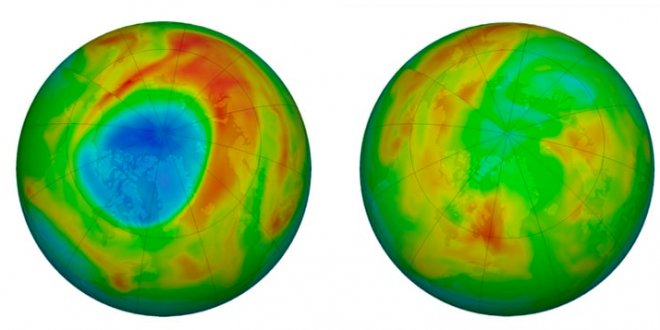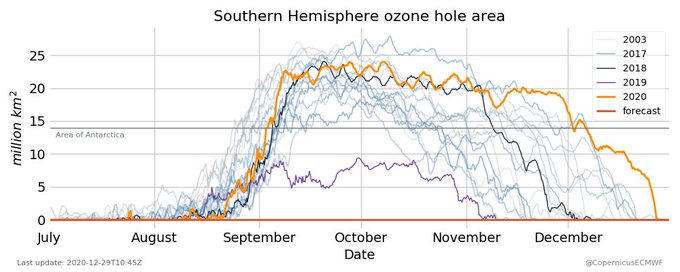During the spring of 2020, an unusual hole was detected in the ozone layer at the North Pole. However, according to reports from the World Weather and Atmosphere Monitoring service Copernicus, he announced on his Twitter account that the hole has already completely disappeared.

In March 2020, coinciding precisely with the outbreak of the Covid-19 pandemic in Europe, NASA satellites detected the largest hole in the ozone layer ever recorded in the Arctic. This is a phenomenon that is more or less usual in the Antarctic winter, since low temperatures cause clouds to accumulate at high altitude and this, combined with the presence of substances such as chlorine and bromine that come from industrial emissions, causes the temporary destruction of ozone in that area. When temperatures rise, the layer recovers. However, the specialists reported that the reason for their disappearance is not subject to the reduction of pollution due to massive confinement, but rather to a heat wave.
Ozone is the gas that protects the Earth from the sun's ultraviolet radiation. As expected, the increase in temperatures in the stratosphere during the month of April 2020, allowed the irruption of ozone-rich air from the inner atmosphere, causing the complete closure of the hole, as reported by the World Meteorological Organization (WMO ).


The last time there was a similar drop in the levels of the ozone layer was in 2011; This year, it happened because in April the polar vortex broke.
The UN signed the Montreal Protocol in September 1987, one of the most successful agreements in history in the field of the environment, with the aim of reducing emissions of substances that damage the ozone layer. With this agreement, the scientists foresee that the ozone of the Arctic and the mid-latitudes of the northern hemisphere will fully recover by mid-century, around 2035, as well as the mid-latitudes of the southern hemisphere; while that of the Antarctic region is forecast for the year 2060.



